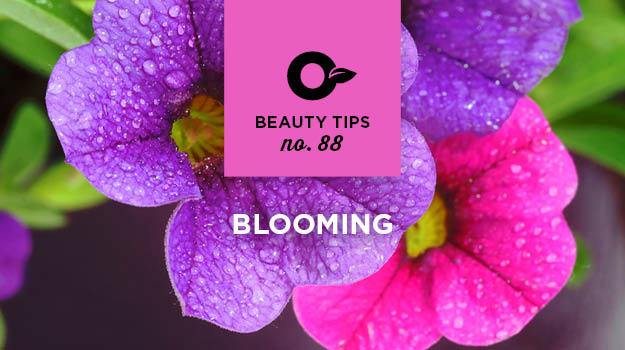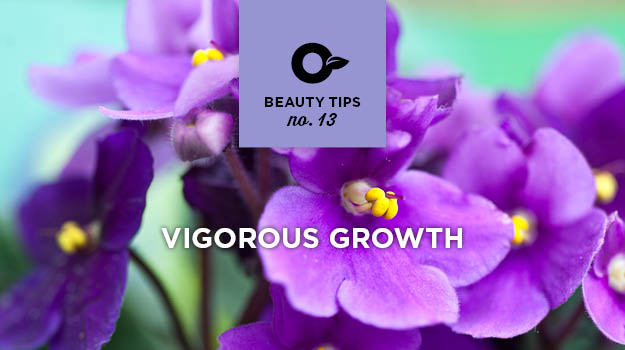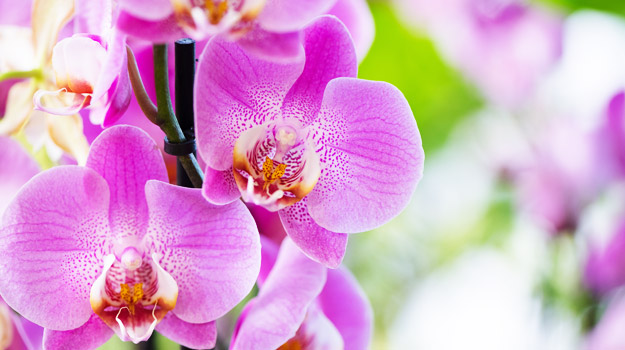
Surely, it will draw attention with its great beauty, but you will need to provide particular care to make sure it reaches its full potential.
Where to place your orchid
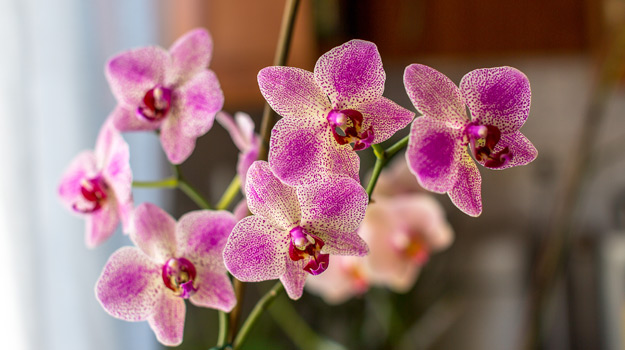
It is important to avoid exposing the plant to direct sunlight, as it could burn its leaves. Orchids love light, but do not cope well with heat. They must also be placed where temperatures won't vary much, so avoid air drafts and air heaters. If you apply these few simple rules, your plant will thrive and be healthy!
Watering
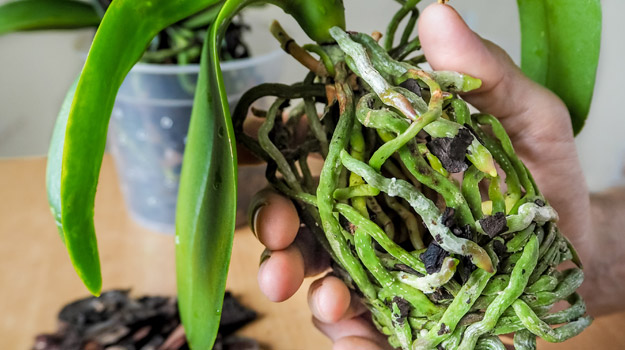
Water only when your plant's roots start to turn white. This means it's thirsty. Soak the roots in water for about a minute, until they turn green again, which indicates the plant is rehydrated. On average, watering once a week should do it. Tip: use a transparent pot so you can easily see the roots.
Orchids aren't big fans of limestone-rich water. If possible, collect rainwater; your plant will love it. If not, add the juice of half a lemon to your water, which will alleviate the negative impact of limestone.
Fertilization
Every two weeks, fertilize your plant. You can simply spray fertilizer directly on its roots or soak the roots in water in which you diluted fertilizer. Make sure to use orchid fertilizer. Two types can be used: one for the growth of leaves and the other for flowering. It is extremely important not to over-fertilize; this could harm the plant and cause its roots to rot.
Repotting
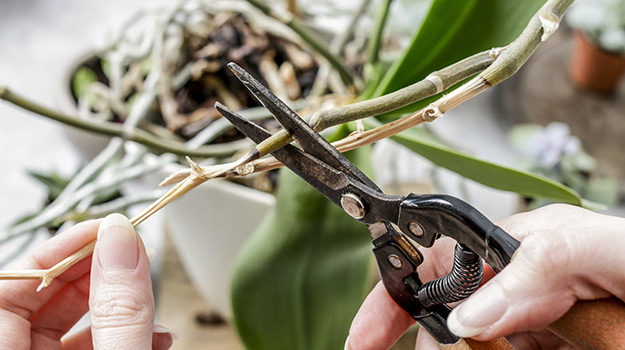
Orchids can easily deal with limited space. You can repot your plant every 2 to 3 years. Use an orchid mix, which usually contains charcoal, Western fir bark and perlite.
Charcoal makes for a better absorption while fir bark prevents compaction and ensures a better water and air supply.
When repotting, remove the growing medium and cut off dry, dead or damaged roots. Use a pot that's one or two centimeters larger in diameter. Finally, place the plant in the new pot with new soil, and stake it so it stays upright.
Taking good care of the leaves
If you use regular tap water, it probably contains limestone. In this case, it is normal to observe white spots on your plant's leaves. You can simply clean the leaves with a wet cloth and a little soap. We recommend that you avoid using leaf polishing products. When the leaves turn yellow, remove them by pulling from the base.

